Last week we looked at the Safari Ltd. queen triggerfish, so it makes sense to look at the companies’ other triggerfish that was released alongside it, the clown triggerfish (Balistoides conspicillum). Like its companion, the clown triggerfish was produced between 2008-2016. Unlike the queen triggerfish however, this species is more popular in the toy hobby, with a TOOB figure by Safari as well as figures from Play Visions, Yujin, Colorata, and K&M.
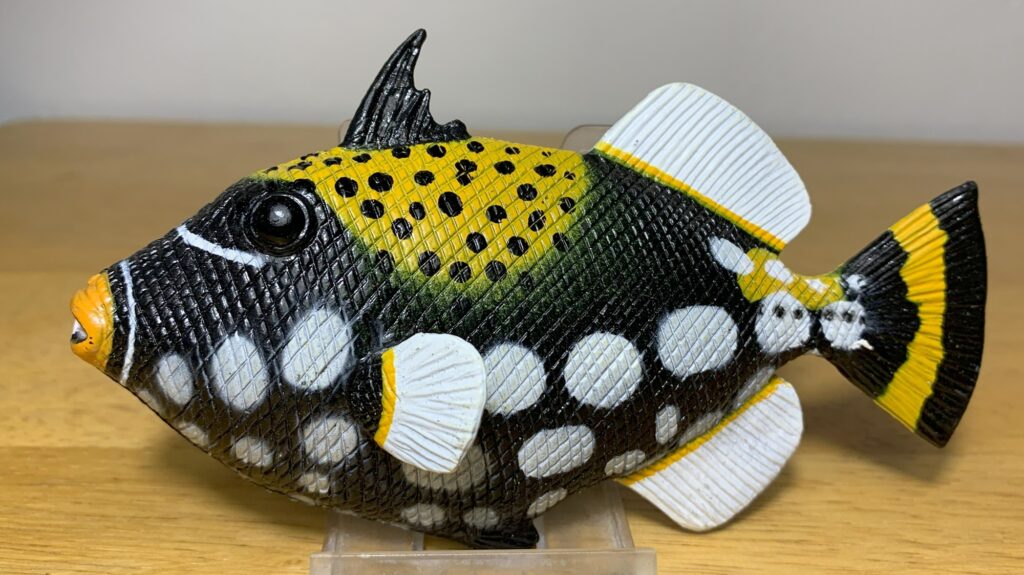
An overview of triggerfish won’t be necessary after last week’s review, so we’ll just discuss this particular species. The clown triggerfish is found throughout the tropical and subtropical waters of the Indian Ocean and in the western Pacific Ocean. Triggerfish as a group are most speciose in the Indo-Pacific region. Clown triggerfish live in clear coastal to outer reef habitats and feed mostly on benthic invertebrates. Clown triggerfish reach 19.7” (50 cm) in total length while the toy measures 5” (12.7 cm). This puts the figure at 1/3.95 in scale. The figure is hollow and cannot stand without support.
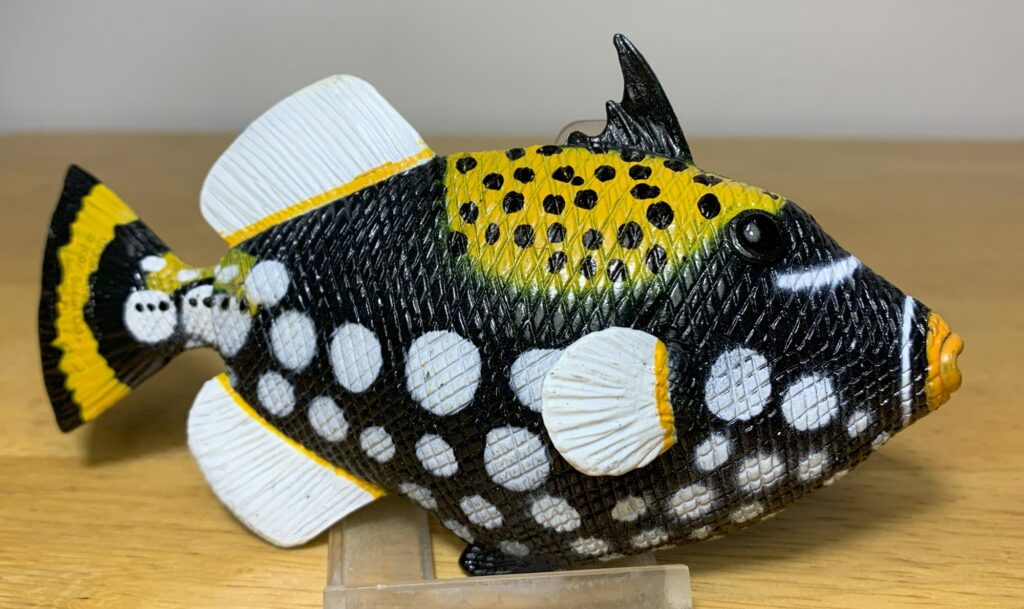
The figure nicely illustrates the laterally compressed, oval shape of triggerfish in general. The head is large with the eyes placed far back and high atop the head. Enlarged incisor-like teeth can be seen within its slightly open mouth. A small vertical slit above each pectoral fin is all we have for a gill opening, since most of a triggerfish’s operculum is covered by skin and scales. And yes, that is a copy-and-paste paragraph from the last review but it’s all applicable. Watch me do it again…
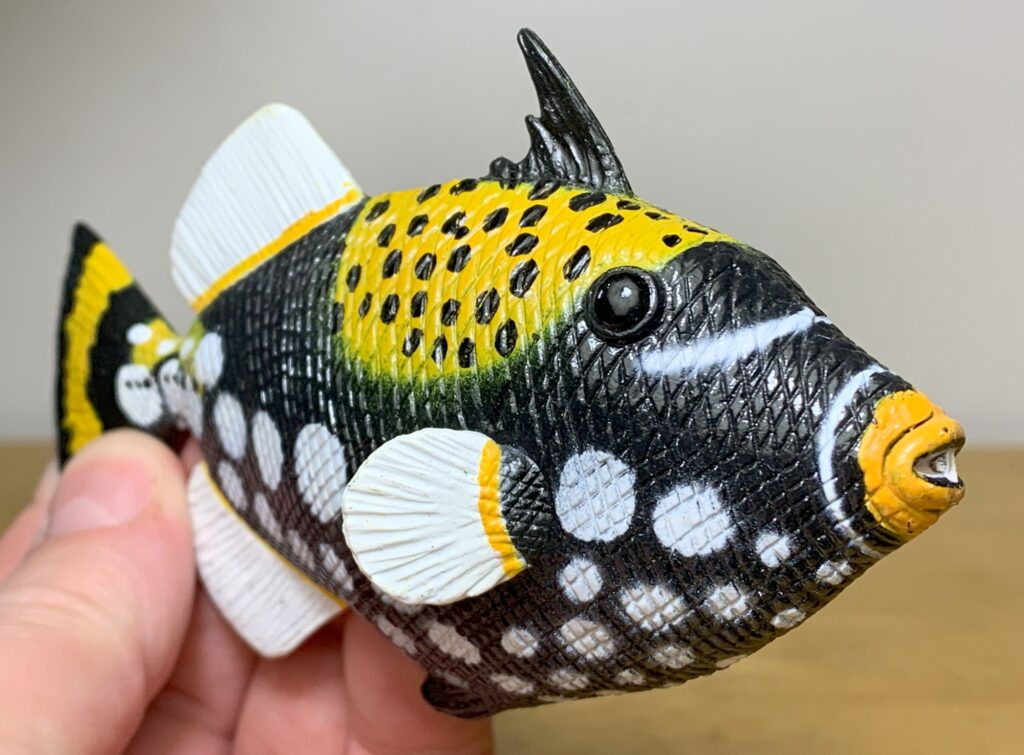
The anterior dorsal fin possesses three erect spines with the first spine being the largest. The pelvic fins are overlaid by skin for most of their length, forming a single spine. Rays are detailed along the pectoral fins, posterior dorsal fin, anal fin, and caudal fin.
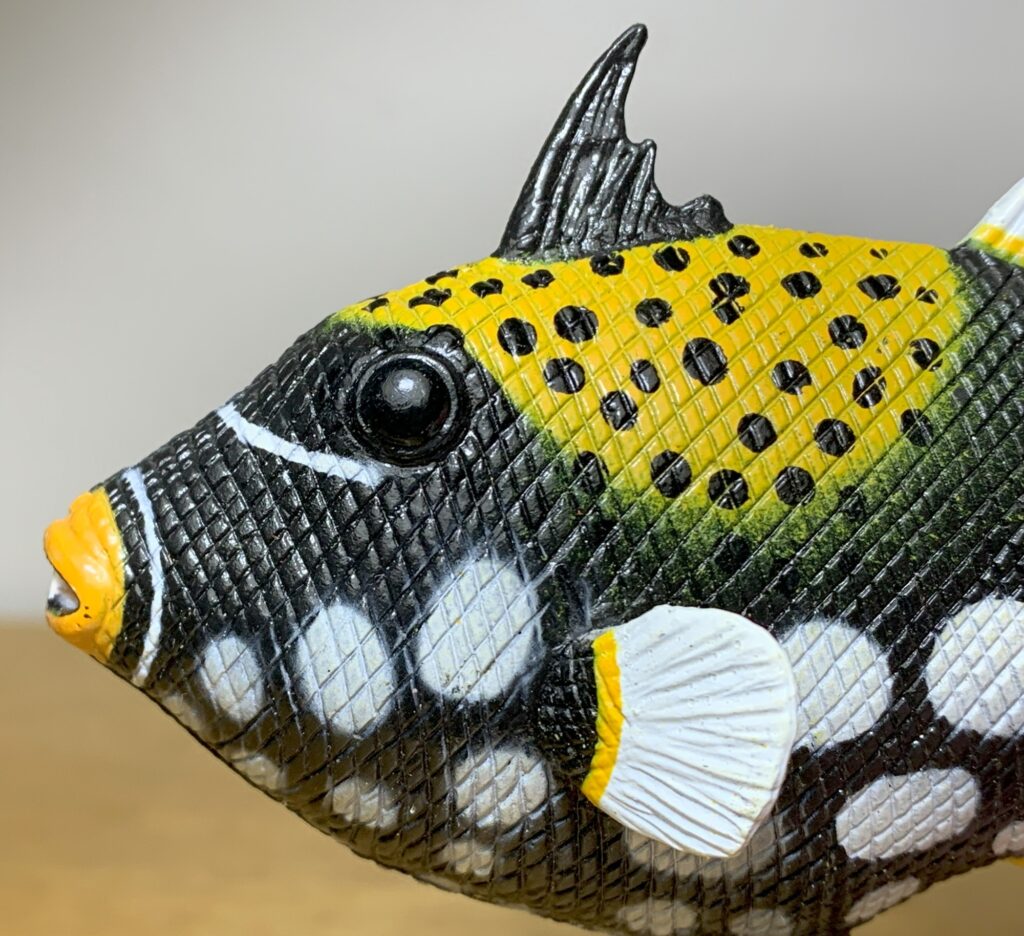
Where this figure differs from the queen triggerfish, however, is with the sculpting of the fin rays. While the queen triggerfish has beautifully accentuated, individual rays, this figure has crudely etched in lines along its fins. Scale detail is limited to cross-hatching which mostly works but the scales should vary in size depending on location. For example, the scales on the head should be smaller than elsewhere, and large scales should be located above the pectoral-fin base and just behind the gill opening, to make the operculum more flexible. There should also be rows of small, spiny scales on the caudal peduncle. Small details like that and the scale size aren’t worth nitpicking too much.
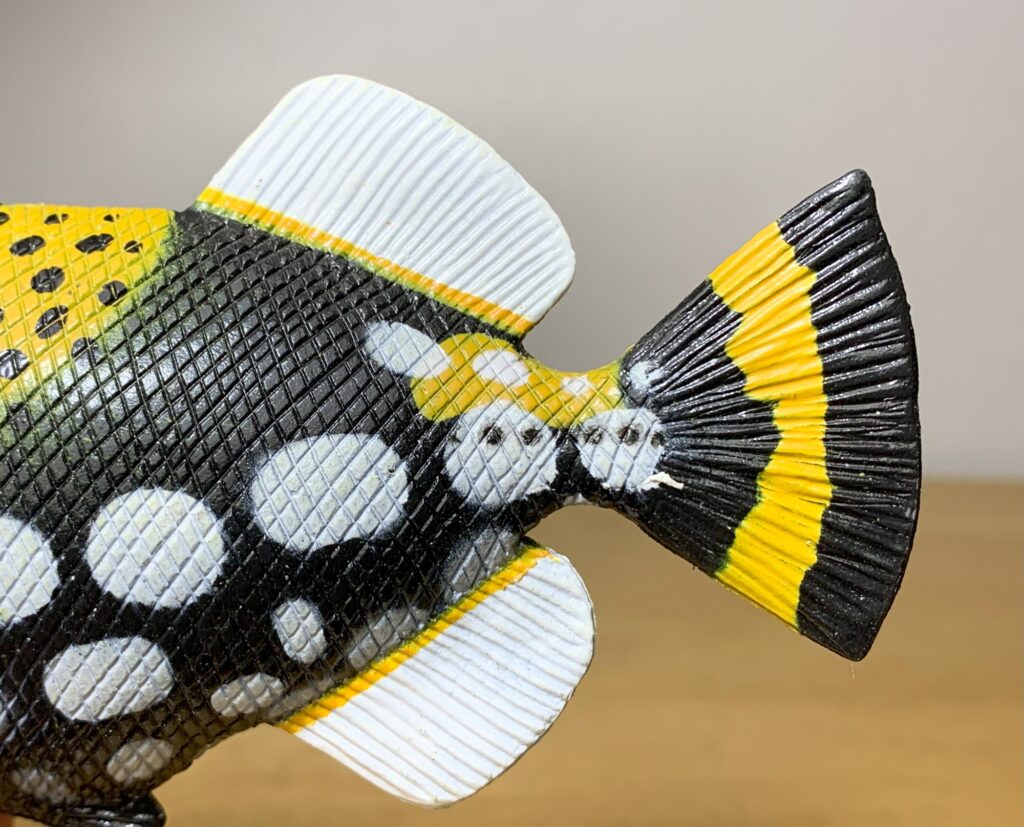
The paintjob is what really makes this figure shine, being largely accurate to the actual fish. The base color is black and a yellow saddle with black spots is painted along the back, with another yellow spot over the caudal peduncle.
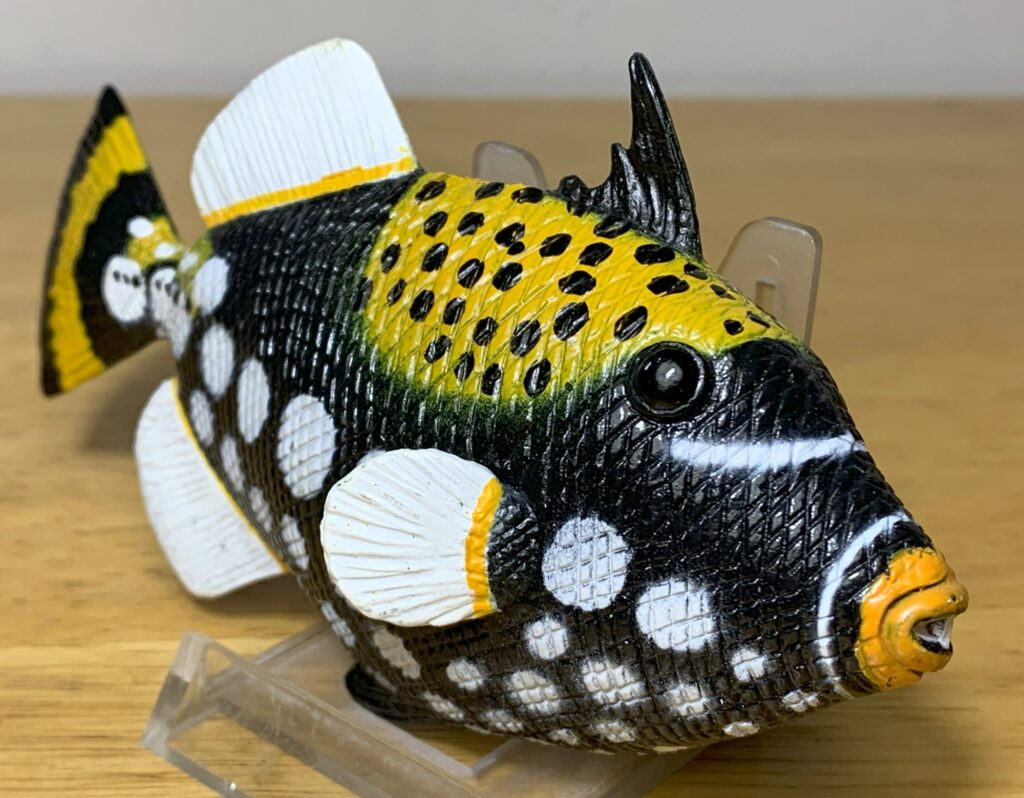
Large white spots run along the belly and a white stripe is painted across the head, in front of the eyes. The lips are yellowish orange with a white ring around them, and a yellow band runs down the caudal fin. The posterior dorsal, anal, and pectoral fins are white with a yellow line at their bases. A bit of a yellow or pink color would have been appreciated along the edge of the posterior dorsal and anal fins but there’s really nothing to complain about with the paintjob.
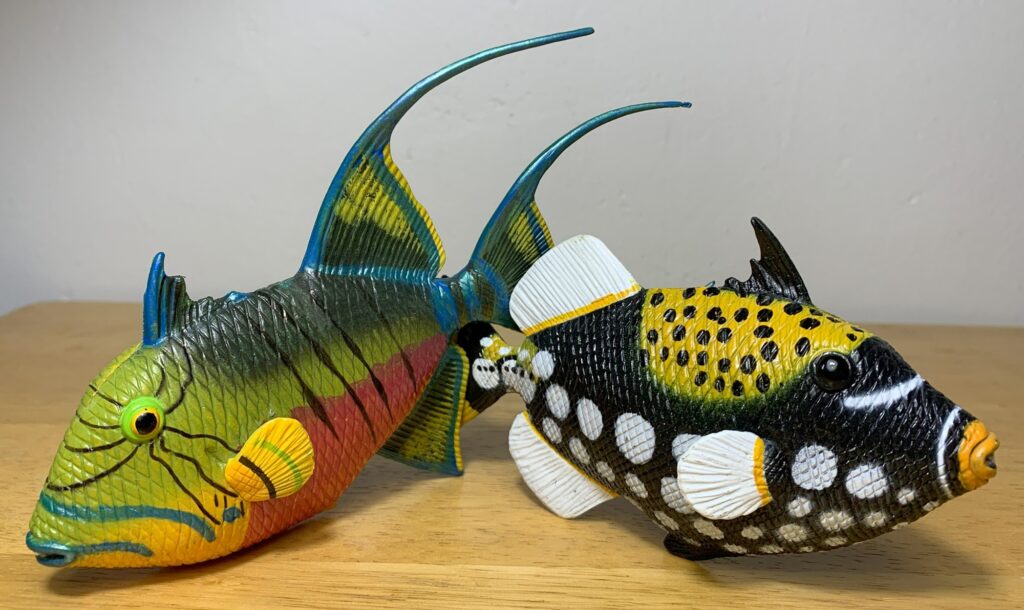
The Safari Ltd. clown triggerfish is not quite as refined as their queen triggerfish but any shortcomings with the fine details are made up for with the fantastic paintjob, and I cannot imagine having one without the other. The clown and queen triggerfish were the only triggerfish species released by Safari but they’re such outstanding figures that it’s a shame Safari hasn’t made more. A Picasso triggerfish would be particularly welcome! The Safari clown triggerfish is difficult to find online and seems to command a high price when it is available. With luck and diligence, you can probably find one in a lot which is how I got mine.
Disclaimer: links to Ebay and Amazon on the AnimalToyBlog are affiliate links, so we make a small commission if you use them. Thanks for supporting us!



